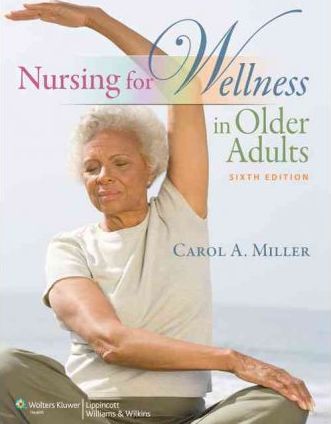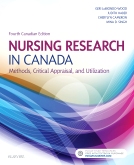Test Bank For Nursing For Wellness in Older Adults 6th Edition by Carol Miller
Original price was: $55.00.$20.00Current price is: $20.00.
Test Bank For Nursing Care of Children Principles and Practice 3rd edition by Susan R. James is a great resource for students preparing for the NCLEX or taking care of children. The Test Bank contains over 2,000 questions and answers covering all aspects of child care.
In addition, the Test Bank includes a complete review of pediatric medications, growth and development milestones, and common childhood illnesses. As a result, Test Bank For Nursing Care of Children is an essential tool for any student seeking to provide the best possible care for their patients.
Digital item No Waiting Time Instant Download
EDITION: 6th Edition
AUTHOR: Miller
PUBLISHER: PB6
Description
Test Bank For Nursing For Wellness in Older Adults 6th Edition by CarolMiller
Chapter 3- Applying a Nursing Model for Promoting
1.
The nurse is using the Functional Consequences Theory as a lens for planning patient care in a health care facility. Does the nurse recognize that which of the following is an element of this nursing theory?
A)
Most problems affecting older adults may be attributed to age-related changes.
B)
Most functional consequences cannot be addressed through nursing interventions.
C)
Wellness is a concept that is broader than just physiologic functioning.
D)
The Functional Consequences Theory is a more comprehensive alternative to holistic nursing care.
2.
The nurse is working with a 79-year-old female patient with a diagnosis of osteoporosis. Which of the following interactions best exemplifies the nurse’s understanding of the relationship between age-related changes and risk factors?
A)
The nurse performs strength and mobility training appropriate to the patient’s age and diagnosis.
B)
The nurse teaches the patient about bone density in older women and the role of vitamin D and calcium intake.
C)
The nurse plans interventions in light of the body-mind-spirit interconnectedness of the patient.
D)
The nurse teaches the patient about how her risk factors are a consequence of age.
3.
The nurse is teaching a colleague about the difference between age-related changes and risk factors. Which of the following examples best demonstrates an age-related change?
A)
An older adult with a diagnosis of diabetes mellitus
B)
An older adult who is obese
C)
An older adult with obstructive lung disease
D)
An older adult with decreased bowel motility
4.
The nurse is differentiating between an 81-year-old patient’s age-related changes and his risk factors for disease. Which of the following characteristics of the patient would the nurse consider as a risk factor?
A)
Chronic bronchitis
B)
Loss of bone density
C)
Decreased vital lung capacity
D)
Delayed gastric emptying
5.
The nurse is identifying positive functional consequences as part of the development of an older patient’s care plan. Which of the following statements best captures the concept of positive functional consequences?
A)
They are synonymous with functional assessment.
B)
They are the result of conscious intent.
C)
They are not outcomes of age-related changes.
D)
They result from automatic actions or purposeful interventions.
6.
The Functional Consequences Theory accounts for the important role that each of the domains of nursing play in the wellness of older adults. Which of the following situations best demonstrates the effect of environment on the older adult?
A)
A resident of a care facility experiences a fall because there are not grab bars outside his bathtub.
B)
A hospital patient develops Clostridium difficile-related diarrhea because a care provider did not perform adequate hand-washing.
C)
A man cannot afford a wheeled walker and suffers a fall while trying to mobilize using his cane.
D)
A woman develops emphysema as a result of her 70 pack-year history of cigarette smoking.
7.
The Functional Consequences Theory can be applied to promote wellness in older adults in diverse settings. Which of the following examples demonstrates this application?
A)
Organizing an interdisciplinary meeting to discuss the available treatment options for an older adult with an acute illness
B)
Facilitating early mobilization to prevent muscle wasting and loss of function in an older hospital patient
C)
Deferring the final decision regarding an older man’s choice of assisted living facility to the man’s son and daughter
D)
Placing a 76-year-old woman on the waitlist for a kidney transplant
8.
A nurse is aware that addressing issues related to connectedness and quality of life is central to the Functional Consequences Theory. Which of the following actions is most likely to enhance the older adult’s connectedness?
A)
Teaching a patient who has had a below-the-knee amputation how to care for his stump
B)
Organizing a client’s intravenous antibiotic therapy on an outpatient basis
C)
Performing a focused respiratory assessment on a client who has a diagnosis of lung cancer
D)
Changing a policy so that a husband and wife can remain in the same room of a care facility
9.
A nurse who provides care for older adults in a long-term care setting is aware of the importance of maintaining residents’ connectedness to society. How can this aspect of quality of life be best achieved?
A)
Ensuring that there are multiple television sets available to residents of the facility
B)
Arranging regular visits by school children to the facility
C)
Conducting reminiscence therapy
D)
Allowing residents to have input into the meal planning at the facility
10.
A 79-year-old man is dismayed that his driver’s license will not be renewed, an action that his primary care provider states is a result of his loss of visual acuity and increased reaction time. This man is experiencing the consequences of
A)
risk factors.
B)
age-related changes.
C)
positive functional consequences.
D)
wellness outcomes.
Answer Key
1.
C
2.
B
3.
D
4.
A
5.
D
6.
A
7.
B
8.
D
9.
B
10.
B





Be the first to review “Test Bank For Nursing For Wellness in Older Adults 6th Edition by Carol Miller”